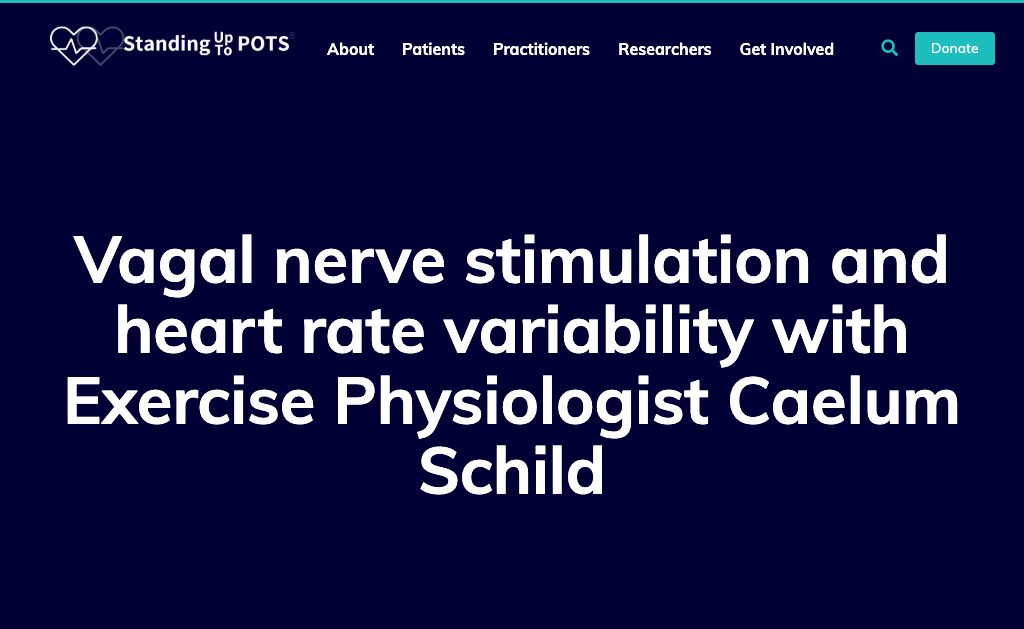Vagal nerve stimulation and heart rate variability with Exercise Physiologist Caelum Schild
Exercise physiologist and POTS patient Caelum Schild describes a pragmatic, non‑drug toolkit for dysautonomia, centered on transcutaneous auricular vagus nerve stimulation (tVNS) and heart rate variability (HRV) monitoring. He explains vagal “brake vs. accelerator” balance, why mornings often feel worse, and why elite athletes can still have POTS (deconditioning is usually secondary). For tVNS (ear tragus clip; low‑level electrical stimulation), he cites a 2024 randomized trial (Stavrakis et al.) showing improved standing tolerance, higher HRV, and reduced inflammatory cytokines/autoantibodies despite mixed patient‑reported symptom changes. Clinically, responses vary: some feel clearer and calmer immediately; others notice benefit only after stopping; some feel over‑sedated if “too parasympathetic.” He starts highly sensitive patients at 1–5 minutes/day, titrating as tolerated, with a practical range of 15–30 minutes/day if no symptomatic signal but biomarker goals are desired; correct tragus placement and device setup are key. HRV is used against a personal baseline (via chest strap or smartwatch/overnight data) to choose a daily Plan A/B/C for activity and recovery; higher isn’t always “better” if it reflects an overshift to parasympathetic “freeze.” He integrates salt, fluids, compression (including intermittent pneumatic boots), pacing, breathwork, diet referrals, and medication coordination (e.g., midodrine when appropriate). Case stories include a patient progressing from housebound post‑flare to finishing a half‑marathon, and another moving from bedbound ME/CFS/POTS to university and work. Take‑home: build an individualized toolkit, test what works (including tVNS and HRV‑guided pacing), and assemble a supportive care team for steady gains over time.
